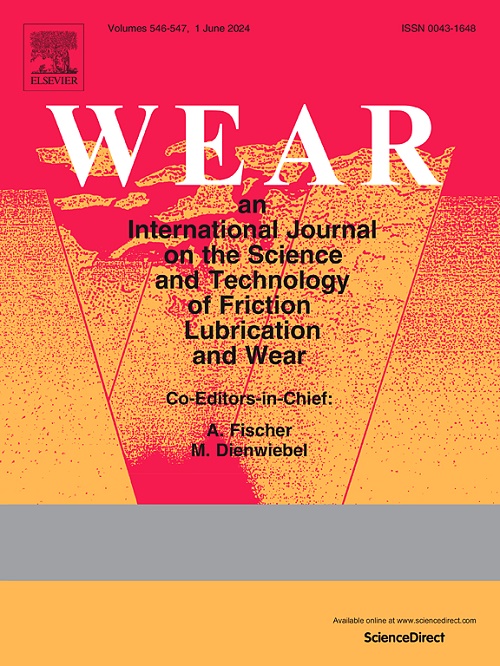结合表面粗糙度参数表征聚氨酯抛光垫化学机械抛光过程中的接触演化
IF 5.3
1区 工程技术
Q1 ENGINEERING, MECHANICAL
引用次数: 0
摘要
化学机械抛光(CMP)中抛光垫的表面纹理决定了材料去除过程中的接触特性。然而,由于聚氨酯抛光垫的多孔结构特征和粘弹性行为,量化这种纹理是具有挑战性的。在本文中,我们提出了一个新的接触表征参数,通过将其与抛光垫表面粗糙度参数相结合,有效地解释了材料的去除。对三种不同表面微观结构的垫片进行实验,采用基于决定系数(R2)的穷穷搜索方法,探索表面粗糙度参数的不同组合。一个二维参数作为均方根高度(Rq)和最大峰高(Rp)的最佳组合,在解释材料去除率的变化方面达到了94.54%的最高精度。该组合参数在不同的垫面条件下比单一参数具有更强的解释力,即使与高维组合相比,也能确保始终保持高R2值而不会过度拟合。所提出的参数,代表整体粗糙度的相对峰值突出,增强了我们对材料去除机制的理解,并为连续磨损过程中表面降解的接触行为提供了新的见解。本文章由计算机程序翻译,如有差异,请以英文原文为准。

Characterizing the contact evolution through the combination of surface roughness parameters in chemical mechanical polishing using a polyurethane polishing pad
The surface texture of the polishing pad used in chemical mechanical polishing (CMP) governs the contact characteristics during material removal. However, quantifying this texture is challenging because of the porous structural characteristics and viscoelastic behavior of polyurethane polishing pads. In this paper, we propose a novel contact characterization parameter that effectively explains material removal by combining it with the polishing pad surface roughness parameter. Experiments were conducted on three types of pads with different surface microstructures, and various combinations of surface roughness parameters were explored using an exhaustive search method based on the coefficient of determination (). A two-dimensional parameter derived as the optimal combination of the root mean square height () and maximum peak height () achieved a maximum accuracy of 94.54 % in explaining variations in the material removal rate. This combined parameter demonstrated enhanced explanatory power over single parameters across diverse pad surface conditions and ensured consistently high values without overfitting, even when compared with higher-dimensional combinations. The proposed parameter, representing the relative peak prominence of the overall roughness, enhances our understanding of material removal mechanisms and provides new insights into the contact behavior of surface degradation during continuous wear processes.
求助全文
通过发布文献求助,成功后即可免费获取论文全文。
去求助
来源期刊

Wear
工程技术-材料科学:综合
CiteScore
8.80
自引率
8.00%
发文量
280
审稿时长
47 days
期刊介绍:
Wear journal is dedicated to the advancement of basic and applied knowledge concerning the nature of wear of materials. Broadly, topics of interest range from development of fundamental understanding of the mechanisms of wear to innovative solutions to practical engineering problems. Authors of experimental studies are expected to comment on the repeatability of the data, and whenever possible, conduct multiple measurements under similar testing conditions. Further, Wear embraces the highest standards of professional ethics, and the detection of matching content, either in written or graphical form, from other publications by the current authors or by others, may result in rejection.
 求助内容:
求助内容: 应助结果提醒方式:
应助结果提醒方式:


